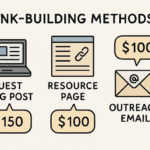When organizations decide to implement Microsoft Dynamics 365, much of the focus tends to revolve around configuration, integration, and going live. However, the real value of the system is not realized at go-live—it’s what happens after that truly determines long-term success. In the United States, trusted Microsoft Dynamics 365 partners play a pivotal role in ensuring businesses not only launch successfully but also achieve sustained adoption, optimized usage, and measurable ROI. These partners go beyond deployment by providing continuous training, user enablement, and ongoing support that is tailored to the unique needs of each organization.
The Importance of Post-Go-Live Support and Adoption
Launching Dynamics 365 is just the beginning of a long journey. Without proper training and adoption strategies, even the most sophisticated implementation can falter. End users may struggle to navigate the platform, workflows may be misused or ignored, and organizational resistance can undercut the investment. That’s why U.S.-based Microsoft Dynamics 365 partners understand the critical nature of post-implementation training and change management.
Rather than treating go-live as a finish line, leading partners in the United States position it as a transition point. From here, they build out robust training programs, provide performance support tools, and ensure that all stakeholders—from entry-level users to top executives—are empowered to make full use of the system’s capabilities. This approach helps increase productivity, reduce errors, and reinforce digital transformation goals.
Customized Training Strategies for Different Business Roles
One of the key methods Dynamics 365 partners in the U.S. use to drive adoption is role-based training. Every department and job function interacts with Dynamics 365 differently. A finance manager using Dynamics 365 Finance will need a different set of skills and insights than a customer support agent working with Dynamics 365 Customer Service.
Top-tier partners provide modular training programs that are personalized based on job roles and team structures. This ensures each user receives the most relevant guidance for their responsibilities. These sessions may be delivered through on-site workshops, virtual labs, recorded e-learning modules, or live webinars—depending on the company’s preferences and workforce distribution.
In addition to role-based instruction, many partners incorporate hands-on learning. These scenarios mimic real workflows within the organization and help users build confidence by completing practical tasks in a sandbox environment before they’re expected to work within the live system.
Change Management for Lasting Adoption
Another core pillar of long-term success is change management. Dynamics 365 implementations often involve changes to business processes, reporting structures, or even job responsibilities. Microsoft Dynamics 365 partners in the United States are well-versed in the psychological and operational aspects of change.
They help organizations map out adoption roadmaps, define key milestones, and establish feedback loops so they can monitor and adjust strategies in real time. These partners may also develop internal champions—power users who act as advocates for the system and provide peer-to-peer support. This not only drives adoption at a grassroots level but also reduces the burden on IT teams.
To complement training efforts, some partners provide communication toolkits, including user guides, quick-reference cards, video walkthroughs, and FAQs to help reinforce learning.
Analytics and Monitoring to Track Adoption Success
Many Microsoft Dynamics 365 partners in the United States integrate analytics dashboards to monitor system usage and user behavior after go-live. These insights allow them to identify gaps in adoption, such as underused features or departments with low engagement.
By tracking user logins, process completion rates, and ticket volumes, partners can assess where further training or support is needed. If a specific module—say, expense management or lead scoring—isn’t being fully utilized, they can intervene with refresher sessions or one-on-one coaching.
This data-driven approach not only ensures long-term optimization of Dynamics 365 but also provides measurable evidence of ROI for executive teams.
Continual Learning and Upskilling
The Dynamics 365 platform continues to evolve with new capabilities, AI features like Microsoft Copilot, and regular updates from Microsoft. To keep users aligned with the latest developments, U.S.-based partners offer ongoing learning opportunities.
Monthly webinars, release notes briefings, and customized training on new features help organizations remain agile and competitive. Some partners even offer learning portals with personalized dashboards, allowing users to track their own progress and earn certifications over time.
This commitment to continual learning ensures that the system matures with the business, not against it.
Support Models That Scale with Business Growth
Support doesn’t stop after the initial implementation. Microsoft Dynamics 365 partners in the United States typically offer managed service models that include helpdesk support, system health checks, customizations, and performance optimizations.
As businesses grow and evolve, their systems need to scale accordingly. Leading partners are proactive in identifying opportunities for enhancements—whether it’s automating a manual workflow, integrating a third-party app, or transitioning to a newer Dynamics 365 module.
Scalable support also includes backup strategies, compliance audits, and integrations with Power Platform tools like Power BI, Power Automate, and Power Apps to help businesses maximize their tech investments.
Top Microsoft Dynamics 365 Partners in the United States Driving Post-Go-Live Success
Below are some of the top service providers known for their excellence in post-implementation training, user adoption, and support for Dynamics 365 in the United States:
- InTWO – Known for its cloud-first approach, InTWO offers end-to-end Dynamics 365 services, including personalized adoption roadmaps, user training, and AI-integrated optimizations.
- RSM US LLP – A leading partner focused on middle market companies, RSM provides industry-specific training and extensive support models to foster long-term success.
- Encore Business Solutions – Encore delivers comprehensive learning platforms, post-implementation webinars, and in-person workshops for ongoing adoption.
- Avanade – Backed by Accenture and Microsoft, Avanade offers global best practices tailored for U.S. businesses, with strong capabilities in change management and digital transformation.
- Sikich LLP – Sikich’s approach combines ERP expertise with user training modules and analytics tracking to ensure smooth transitions and adoption.
- Columbus U.S. – With deep domain experience in manufacturing and food sectors, Columbus emphasizes training-as-a-service and custom documentation.
- Velosio – Velosio offers onboarding programs, cloud-readiness evaluations, and post-launch assessments designed to optimize user experience and system performance.
- Alithya – Recognized for strong governance and support frameworks, Alithya partners with businesses to sustain long-term Dynamics 365 maturity through scalable training.
Conclusion
The journey to successful Dynamics 365 implementation doesn’t end with deployment—it begins there. The ability to drive lasting value from the system depends heavily on training, adoption, and ongoing support. microsoft dynamics 365 implementation partners United States understand this reality and offer structured, tailored programs that equip organizations for the long haul.
From role-based learning and change management to analytics and continuous upskilling, these partners ensure that Dynamics 365 is not just a platform but a long-term enabler of digital transformation. Whether you are a small business starting your ERP journey or an enterprise modernizing your CRM systems, choosing the right partner is the key to unlocking the full potential of Dynamics 365.
You May Also Read: The Future of Translation: How AI and Human Translators Can Coexist



















